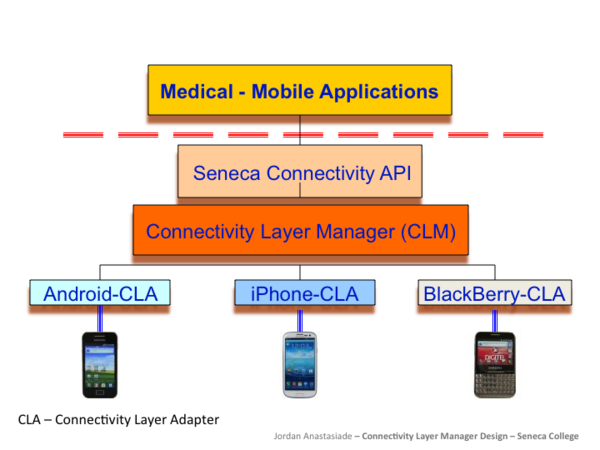NexJ Express/I2I
Proposal for: College-University Idea to Innovation (CU-I2I) Grants - Selection Criteria
Technical Detailed proposal: 1-2 pages
intro
The innovative use of smartphones has opened up a significant business opportunity for integrating mobile devices with health care systems. Recognizing the market potential, major software vendors have started promoting mobile programming models and tools that are tailored to the communication protocols built into the medical devices. Recent progress in the design of medical devices, with their communication infrastructures, has increased the likelihood of successful interactions between mobile and medical devices.
technical issues
There are already marketed solutions and architectures that promote and facilitate the development of adaptive mobile health applications (e.g., the NexJ Personal Health Coaching mobile app). However, the lack of unified standards in the mobile computing field, combined with an increasing variety of medical devices, requires a concentrated research effort for designing ubiquitous mobile medical applications. The adoption of one of the proprietary protocol specifications, as connectivity standard, can easily break the underlying communication infrastructure for a different mobile platform (for example iOS vs. Android). The design, development and delivery of a generic connectivity layer is a complex task.
applied research problem
Therefore, the purpose of this applied research is to investigate, design and develop reusable software components that can be dynamically combined to permit the ubiquitous connectivity by various wireless communication protocols.
describe the methodology and experimental design proposed to explain or resolve them
It is well known that modularity reduces software complexity. We propose to reduce the complexity of the protocol dependencies by creating a modular architecture, where communication adapters can be easily interchanged based on the application requirements. This modularity layer will leverage the mobile devices functionality and foster the portability, maintainability, and integration with medical devices. Thus, the proposed modular protocol detection and the ad-hoc communication system will create an abstract layer intended to isolate the complex medical applications from the underlying multitude of specialized, proprietary communication protocols (see Fig X.
Provide a work plan and relate it to the milestone schedule
The work plan is subject to change depending on market conditions and NexJ requirements:
Q1 – 13 Android OS – Bluetooth - Blood Pressure Devices
Q2 – 13 iPhone OS – Bluetooth - Blood Pressure Devices Q3 – 13 Android – Bluetooth Glucometers Q4 – 13 iPhone – Bluetooth Glucometers Q1 – 14 Blackberry - Blood Pressure Devices & Glucometers (market constrains) Q2 – 14 Android OS – Bluetooth Weight Scale Devices and CLA (see Fig. X) Q3 – 14 iPhone OS – Bluetooth Scale Devices and CLA (see Fig. X) Q4 – 14 CLM and Seneca API for Bluetooth (Android, iPhone, Blackberry)
Q1 – 15 Android OS - WiFi - Blood Pressure Devices Q2 – 15 iPhone OS & Blackberry OS – WiFi - Blood Pressure Devices Q3 – 15 Android OS & iPhone OS WiFi Glucometers Q4 – 15 CLM and Seneca API for WiFi (Android, iPhone, Blackberry, see Fig. )
Describe the roles of any students
This project is a mobile health coaching solution built upon an open health platform. The students will develop technologies that enable wireless connectivity between medical measurement devices and the smart phone solution. Such development can only be done if the mobile solution is divided into sufficiently modular parts, as the connectivity research is done in tandem with the mobile solution implementation. This type of structure has the benefit of parallel teams working simultaneously. The benefits for the students being part of such a project is the direct exposure to new and emerging technologies, a contribution to the open health movement and finally exposure to professional developers and their development processes and designs. Experience of this caliber has far reaching applications and depth.
